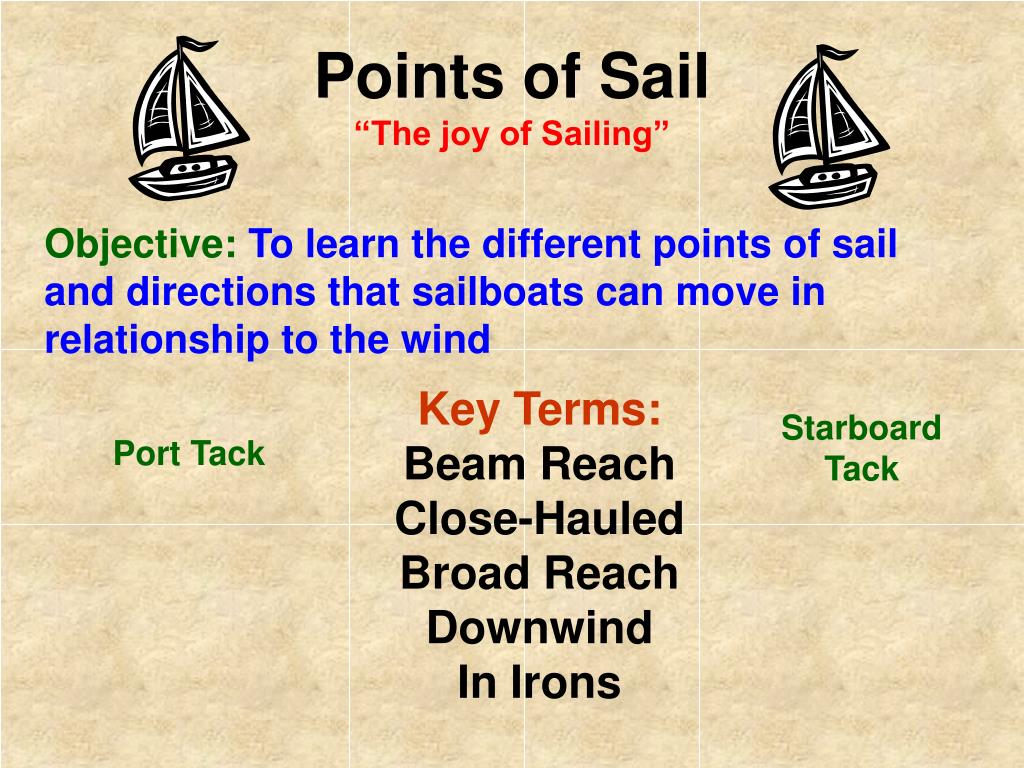
PPT Sailing Points of Sail PowerPoint Presentation, free download ID5637227
To understand how points of sail affect maneuverability, we must first grasp what they are. A point of sail refers to the angle between your boat's heading (the direction it points) and the direction from which the wind blows. There are six main points of sail: close-hauled, close reach, beam reach, broad reach, running dead downwind, and.
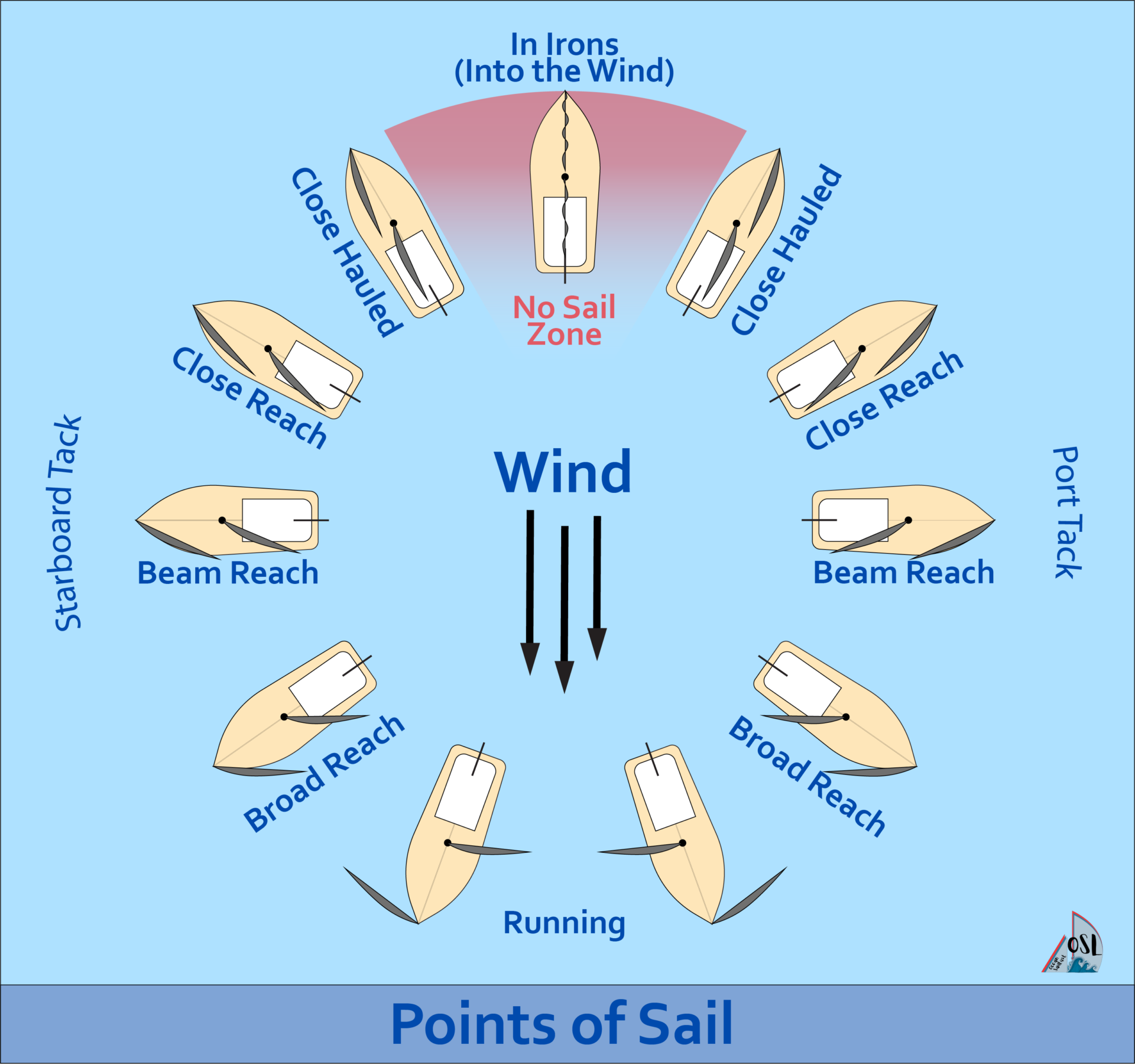
The 6 Points of Sail Diagram of Wind Direction and Sail Trim Ocean Sail Lust
The Points of Sail are called the same on either a Port Tack or Starboard Tack (A starboard tack is when the wind is blowing from the starboard/right side of the vessel, while a port tack is when the wind is blowing from the port/left side of the vessel).

An Easy Guide to Points of Sail — Saltwater Journal
Points of Sail The angle of the sail is the difference between the direction your boat is heading and the direction of the wind. Different angles of sail, called points of sail, change as your boat changes course, and the sails must be adjusted to harness the wind as efficiently as possible.

Points of Sail An Easy Way to Learn the Points of Sail • Deep Water Happy
Points of sail are the various angles between your boat's heading and the direction of the wind. Understanding these angles is crucial for efficient sailing, as it allows you to harness the wind's power to propel your boat in the desired direction. There are six primary points of sail: No-Go Zone Close-Hauled Close Reach Beam Reach Broad Reach

Play to sail basic yachting terminology — Sailor's base camp to start enjoying the High Coast
The main points of sail are: Into the wind: The no-sail zone Close-hauled: Sailing as close to the wind direction as possible. Close reach: Sailing between a beam reach and close-hauled, at an angle to the wind. Beam reach: Sailing perpendicular to the wind, with the wind hitting the side of the sail.

PPT Sailing Points of Sail PowerPoint Presentation, free download ID5637227
There are five main points of sail: Close Hauled, Beam Reach, Broad Reach, Running Downwind, and No-Sail Zone. Each point of sail has its own set of characteristics and requires different sail trim and steering techniques. Close Hauled Close Hauled is the point of sail closest to the wind.
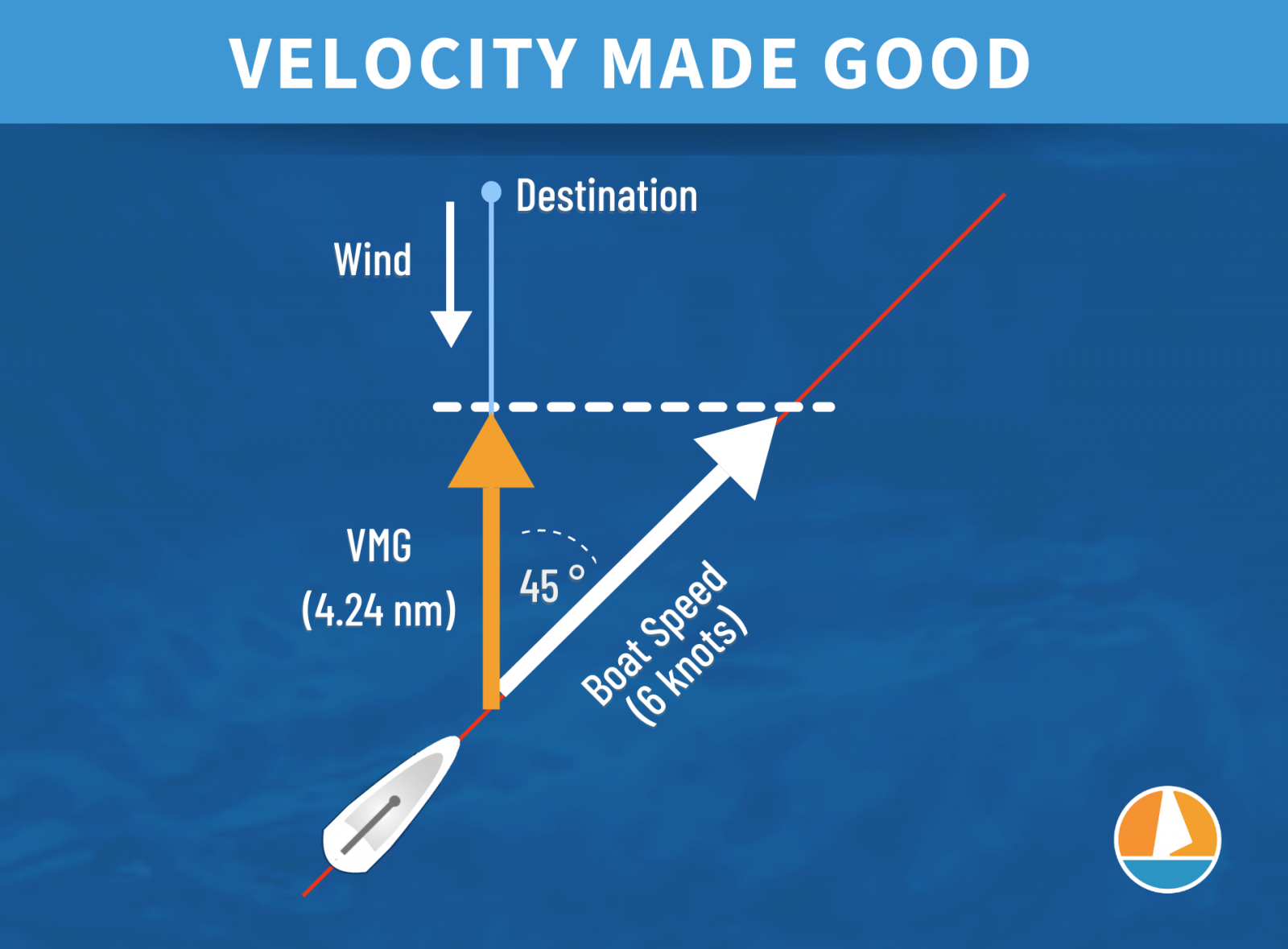
What Is the Fastest Point of Sail? & Efficient) Improve Sailing
Points of Sail A sailboat harnesses wind forces differently depending on the direction it travels with respect to the wind. This direction is formally known as the point of sail or tack. Each point of sail has an optimal sail configuration that harnesses lift and drag forces most efficiently to propel the boat forward.

Understanding the Points of Sail
1. Into the Wind (In Irons) Being into the wind or in irons means your sailboat is going straight into the wind (plus or minus 45 degrees from 0), which will prevent your sailboat from… sailing! Being into the wind can't be 100% avoided, and it shouldn't be, but it's generally not where you want to be if you plan on moving.

Points of Sail An Easy Way to Learn the Points of Sail • Deep Water Happy
The Sailing Life and You Tips for Planning the Perfect Overnight or Weekend Getaway! Sailors should know where the wind is coming from and the wind angle relative to their boat for sail-trim purposes. Learn the five points of sail in this illustrated article.

Points of Sail & Wind Awareness Grenada Bluewater Sailing
Points of Sailing refer to the course of the Sailboat in relation to the direction of the Wind. You need to make the necessary adjustment in the Sails so the Sailboat will go to its destination. The Different Points of Sail: No-Sail Zone This is the point directly upwind of the Sailboat.

Points of sail. What are the various direction of a sailboat called.
Short answer points of sail diagram: A points of sail diagram illustrates the different angles at which a sailing boat can interact with the wind. It typically presents five main positions - close-hauled, beam reach, broad reach, running, and an illustration of how these angles relate to the wind direction. These diagrams assist sailors in

Points of Sail
The term "point of sail" refers to the direction a sailboat is sailing relative to the wind. There are eight main points of sail, including upwind, close-hauled, beam reach, broad reach, running, and others in between. Each point of sail requires different adjustments to optimize boat speed and maneuverability.

The Bay
A point of sail is a sailing craft's direction of travel under sail in relation to the true wind direction over the surface. The principal points of sail roughly correspond to 45° segments of a circle, starting with 0° directly into the wind.

PRINCIPLE SAILING TERMS Ocean Sailing Academy
The 5 points of sail explained NO-GO-ZONE or In Irons - Head to wind 1. Close Hauled - Sailing close to the wind 2. Close Reach - Bearing away from the wind 3. Beam Reach - The fastest point of sail 4. Broad Reach - Rig your boom preventer 5. Running - Sailing downwind Closing the circle of sailing points
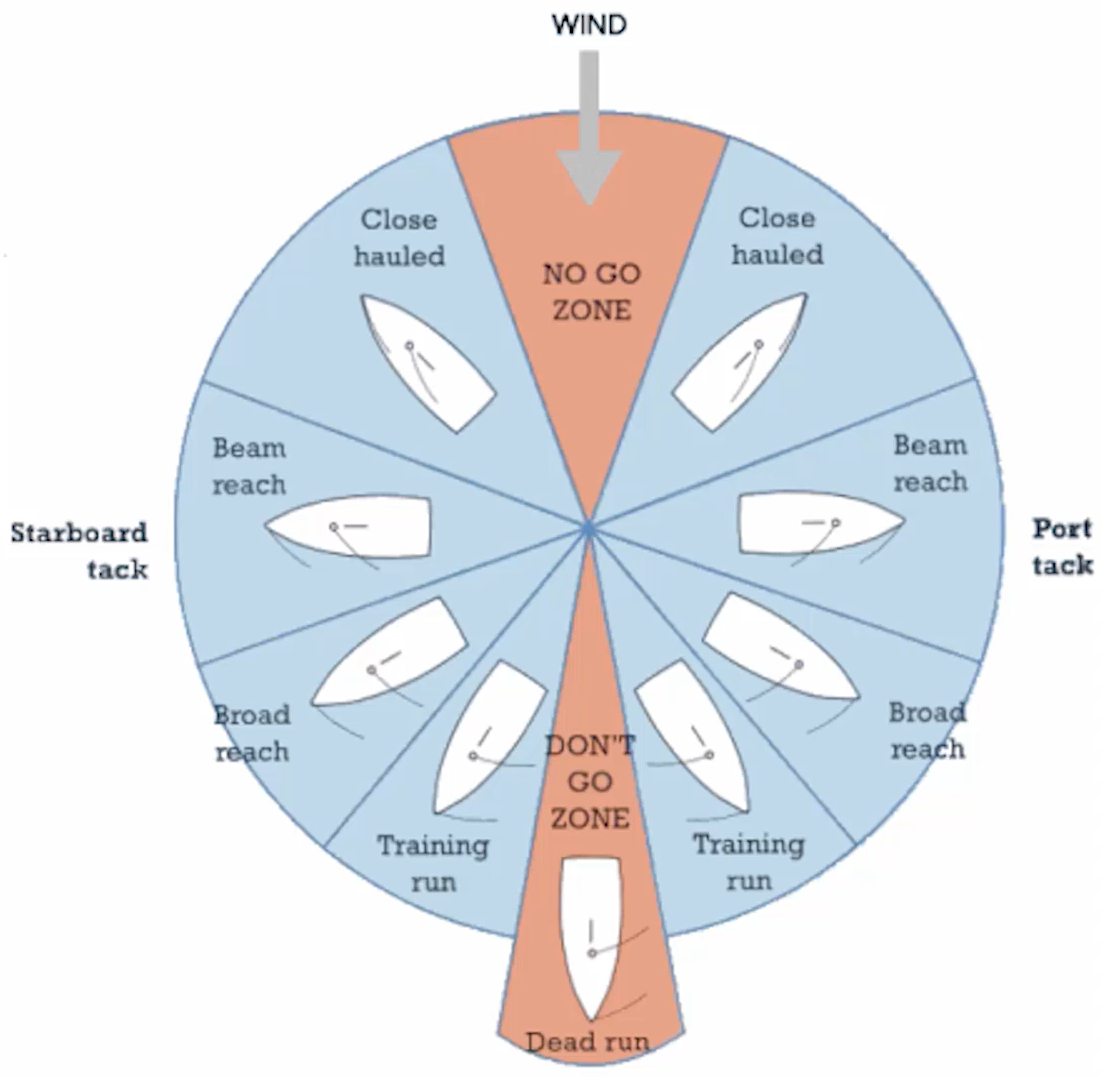
[BLOG] Beginner's Guide to Sailing Sailboat Rental San Diego MBSC
The main points of sail from straight upwind are beating (or "close hauled"), reaching (close, beam, and broad), and running. There is also a no-sail zone straight upwind, though this is not generally viewed as a point of sail since you can't sail there. Upwind Sailing: Against the Wind
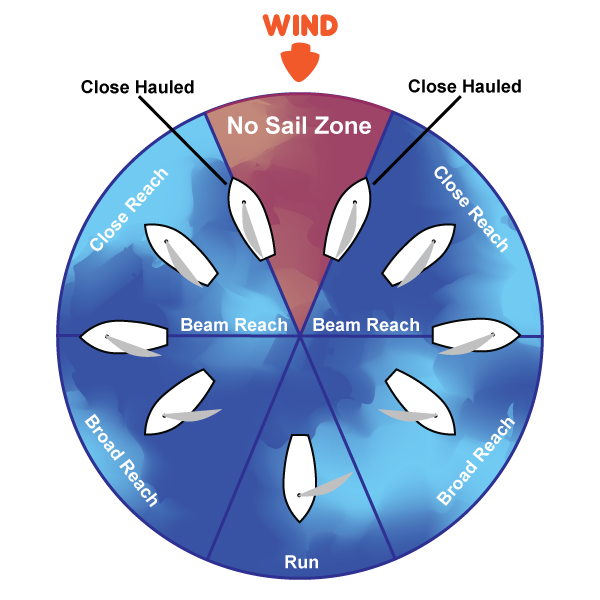
Points of Sail How to Sail
Points of Sail: The Ultimate Guide Evan January 25, 2021 Sailing Guides The points of sail are very important to any sailor, but can be a little confusing to the novice sailor. In this posting we will go over each point of sail in detail and explain what it means to you when you are sailing. Basic Sailing Zones